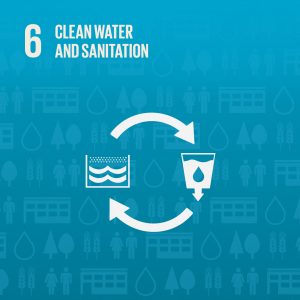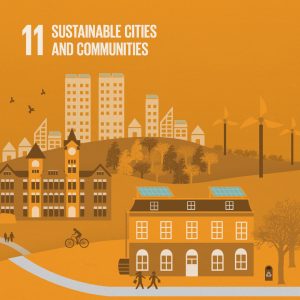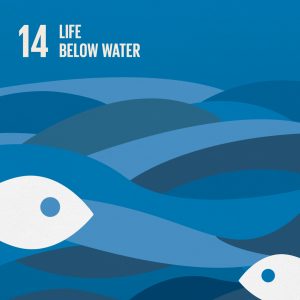By Hannah Schwartz
Conserving water is crucial for the health of our planet and future generations. With water scarcity continuing to be a pressing global issue, every drop saved makes a difference. By reducing water usage, we protect ecosystems, wildlife, and agricultural lands that rely on this precious resource.
With this in mind, STARS* asks universities to assess their water conservation.
STARS aligns these criteria with the following United Nations Sustainable Development Goals (UN SDG):
- Goal 6: Ensure availability and sustainable management of water and sanitation for all
- Goal 11: Make cities inclusive, safe, resilient and sustainable
- Goal 14: Conserve and sustainably use the oceans, seas, and marine resources for sustainable development water contamination.
Subcategories:
- Water Use: This credit attempts to measure the reduction in potable water use per person, reduction in potable water use per unit of floor area, and reduction in total water withdrawal per unit of vegetated grounds. Each part is scored independently. This credit is weighted more heavily for institutions in areas of water stress and scarcity and less heavily for institutions with relative water abundance. They are measured in Physical Risk Quantity: Low and Low to Medium Risk, Medium to High Risk, and High and Extremely High Risk. Fiscal year 2010 serves as the baseline for the university’s formally adopted water reduction goals and was adopted in 2017 when the Facilities Management Energy Reduction strategy was updated and republished. Since our base period (2009-2010), Auburn has decreased our total water withdrawal from 404,023,000 gallons per year to 334,597,000 gallons per year, a difference of 69,426,000 gallons per year.
- Auburn’s Score: 3.36/4.00
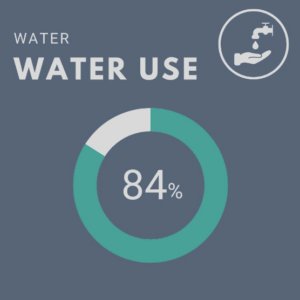
- Auburn’s Score: 3.36/4.00
- Rainwater Management: This subcategory attempts to measure if the institution uses green infrastructure and low –impact development (LID) practices to help mitigate stormwater run-off impacts and treat rainwater as a resource rather than a waste product. Institutions can earn points by having comprehensive rainwater management policies, plans, or guidelines that incorporate green infrastructure, cover the entire campus, and mandate the use of LID practices. Partial points are allowed. Through the continual implementation of minimum control measures, the Auburn University Stormwater Management Plan (SWMP) strives to implement measures on campus to address both water quantity and quality on campus.
- Auburn’s Score: 2.00/2.00
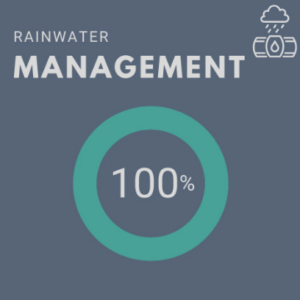
- Auburn’s Score: 2.00/2.00
Reflection:
Auburn University has a utility dashboard available for nearly all campus buildings, which includes water usage for each building. The Office of Sustainability conducts various outreach efforts through its student intern program and employee Peers Network program. Typical yearly efforts tied to water conservation include social media messaging, Earth Month activities, office strategy checklists, posters, and messages shared through tabling at events around campus. The office also features water management information on its new employee education material and its website for both Living at AU and Working at AU.
Through the continual implementation of minimum control measures, the Auburn University Stormwater Management Plan (SWMP) strives to implement measures on campus to address both water quantity and quality. Through public education & outreach and public involvement & participation measures, facilitators of the SWMP and the Parkerson Mill Creek Watershed Management Plan recognize the importance of communicating with and engaging the campus community to create a better understanding of stormwater management principles. These efforts include the development of informational fact sheets, workshops, and creek clean-up events.
Auburn University could continue improving our water usage by partnering with the local government to push our initiatives to the community around the campus as well. Student groups are another way we could increase awareness of the topic, as well as create an opportunity of involvement for students interested in preserving water. We can also continue to build Leadership in Energy and Environmental Design (LEED) certified buildings on campus to create a more sustainable future. We must be able to count on those around us, and on ourselves, to make the right decisions and continue moving towards sustainability.
*The Sustainability Tracking, Assessment, and Rating System (STARS) program is a self-reporting framework for institutions of higher education to track their sustainability performance created by the Association for the Advancement of Sustainability in Higher Education. Overall, STARS is made up of 211 possible points in 64 different subcategories. The subcategories are grouped by Academics, Engagement, Operations, and Planning & Administration. Additionally, participants may receive extra points for exemplary and innovative practices. In this summary, our score is shown over the amount of possible points for each credit. View Auburn University’s 2022 STARS Report for more details.
Learn about the SDGs & AU and our contributions related to this post

